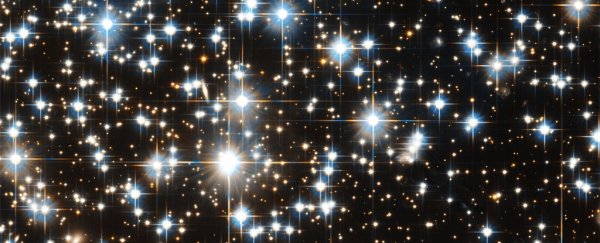Carbon. You might not think about it very much, but you wouldn't be alive without it. It's the main ingredient in organic compounds found in all living organisms on Earth, but exactly where carbon comes from has been a matter of some debate.
Now, new research has found that the primary source of carbon in the Milky Way is white dwarf stars - the dead cores of stars that were once a lot like our Sun.
It's well understood that elements heavier than hydrogen and helium are forged by stars across the Universe. The fusion of elements in the cores of stars can build elements as heavy as iron via a process called stellar nucleosynthesis; even heavier elements are created through processes such as the neutron capture seen in massive supernovae.
Carbon is formed via the triple-alpha process, in which three helium nuclei fuse together to form carbon, a process that takes place towards the end of a star's lifespan.
But it was unclear to astronomers whether the abundance of carbon in our galaxy was largely the result of Sun-sized stars shedding their skins as they quietly collapsed into white dwarfs, or if it was blasted out by far more massive stars as they went supernova.
A team of astronomers led by Paolo Marigo of the University of Padova in Italy went looking for answers in open star clusters - groups of up to thousands of stars that are all more or less the same age, formed in the same molecular cloud.
In five molecular clouds, the team identified the white dwarfs, using observations obtained by the W. M. Keck Observatory in Hawaii in 2018. These observations delivered the star spectra - 'fingerprints' of light that can be decoded to reveal information about the star, such as temperature (and therefore age), chemical composition, and surface gravity (and therefore mass).
"From the analysis of the observed Keck spectra, it was possible to measure the masses of the white dwarfs. Using the theory of stellar evolution, we were able to trace back to the progenitor stars and derive their masses at birth," explained astrophysicist Enrico Ramirez-Ruiz of the University of California Santa Cruz.
The mass of a dead star is known to be linked to that of its progenitor. It makes sense - the more massive a white dwarf, the more massive the progenitor star that produced it. These masses aren't exactly the same, though, since the progenitor star ejects so much material into space. This relationship between the two masses of the white dwarf is known as the initial-final mass relation.
In white dwarfs, the mass relation can be calculated if you have a white dwarf's spectrum. As dead stars, they are no longer fusing nuclei, and are therefore cooling; any heat a white dwarf retains is residual, and will slowly radiate out into space over billions of years. If we know its mass, temperature and chemical composition, we can calculate the rate of this cooling. In turn, this allows astronomers to calculate the white dwarf's age - how long since core collapse.
This is where the open clusters come into the picture. Since we know how old the clusters are, we can subtract the time since core collapse from the age of the cluster to find out how old the star was when it died - and this information can be used to calculate the initial mass of the progenitor star.
But when the team applied it to some of their white dwarfs - specifically, those with a progenitor mass higher than about 1.5 times the mass of the Sun - they noticed something really peculiar. The masses of the white dwarfs were higher than expected for the masses of their progenitors, what the team calls an initial-final mass relation kink.
"Our study interprets this kink in the initial-final mass relationship as the signature of the synthesis of carbon made by low-mass stars in the Milky Way," Marigo said.
The team believes that the event takes place in white dwarf progenitor stars towards the ends of their lifespans. They fuse helium into carbon, deep in their cores. Then this carbon is transported to the surface, where it is blown off into space in relatively gentle stellar winds. Because the process happens so slowly, the star has time to gain mass in the core. It is this more massive core that collapses into a heavier-than-expected white dwarf.
Generally, this occurs in stars of more than about 2 solar masses, but it's not seen in stars of less than 1.5 solar masses, which places a pretty good lower limit on the mass of carbon-spewing stars. Importantly, a look at similar stars in other galaxies helps us better understand the timing of dying stars dusting the Milky Way with carbon, making the progenitors of white dwarfs the most likely source.
This could also help us to understand what's going on in distant galaxies, where we can't make out individual stars. A carbon signature in the aggregate light can tell us about distant white dwarf populations.
And the research will also better help us understand how carbon gets seeded throughout the Milky Way - which, in turn, could have implications for the search for extraterrestrial life.
The research has been published in Nature Astronomy.
